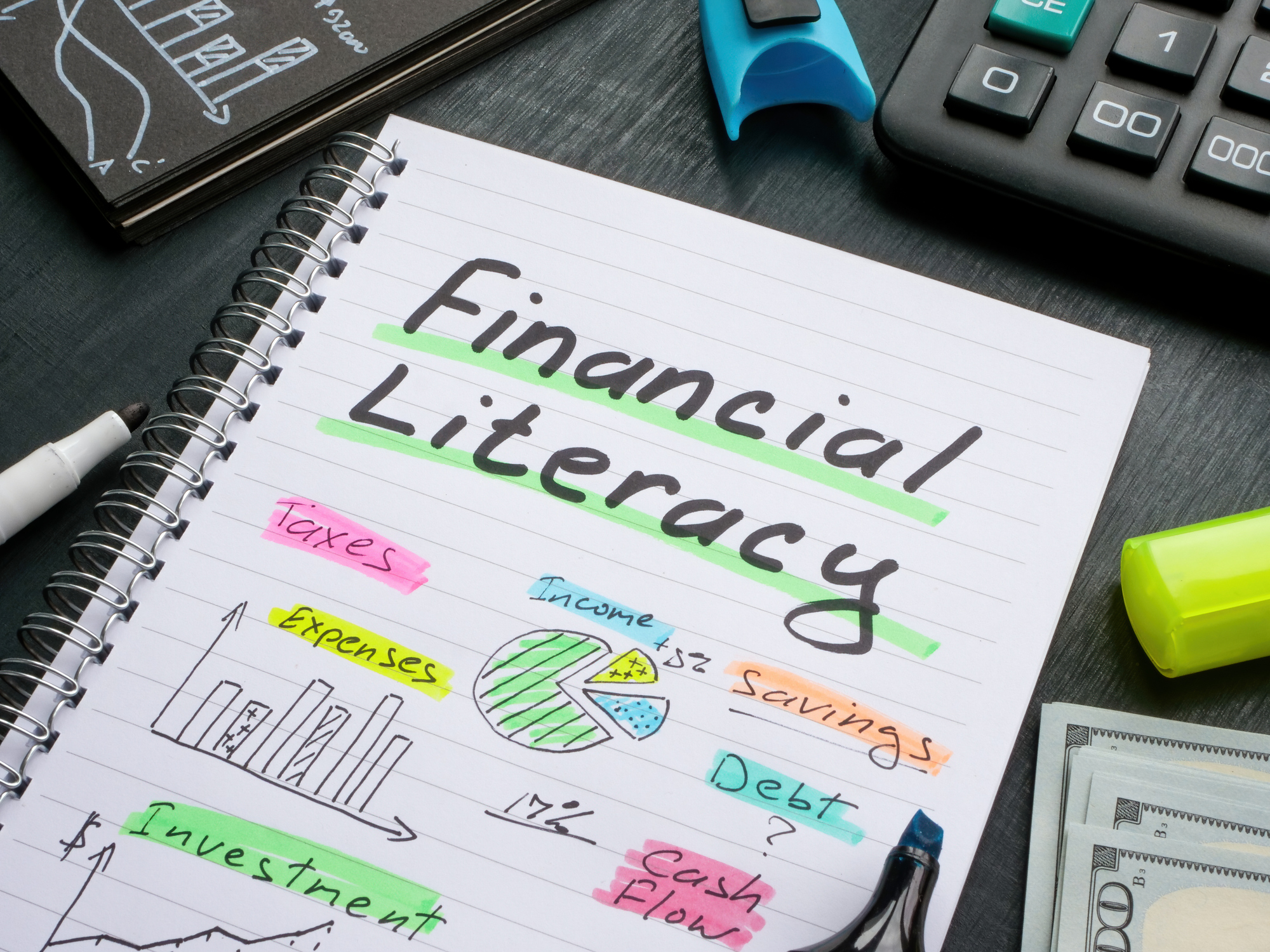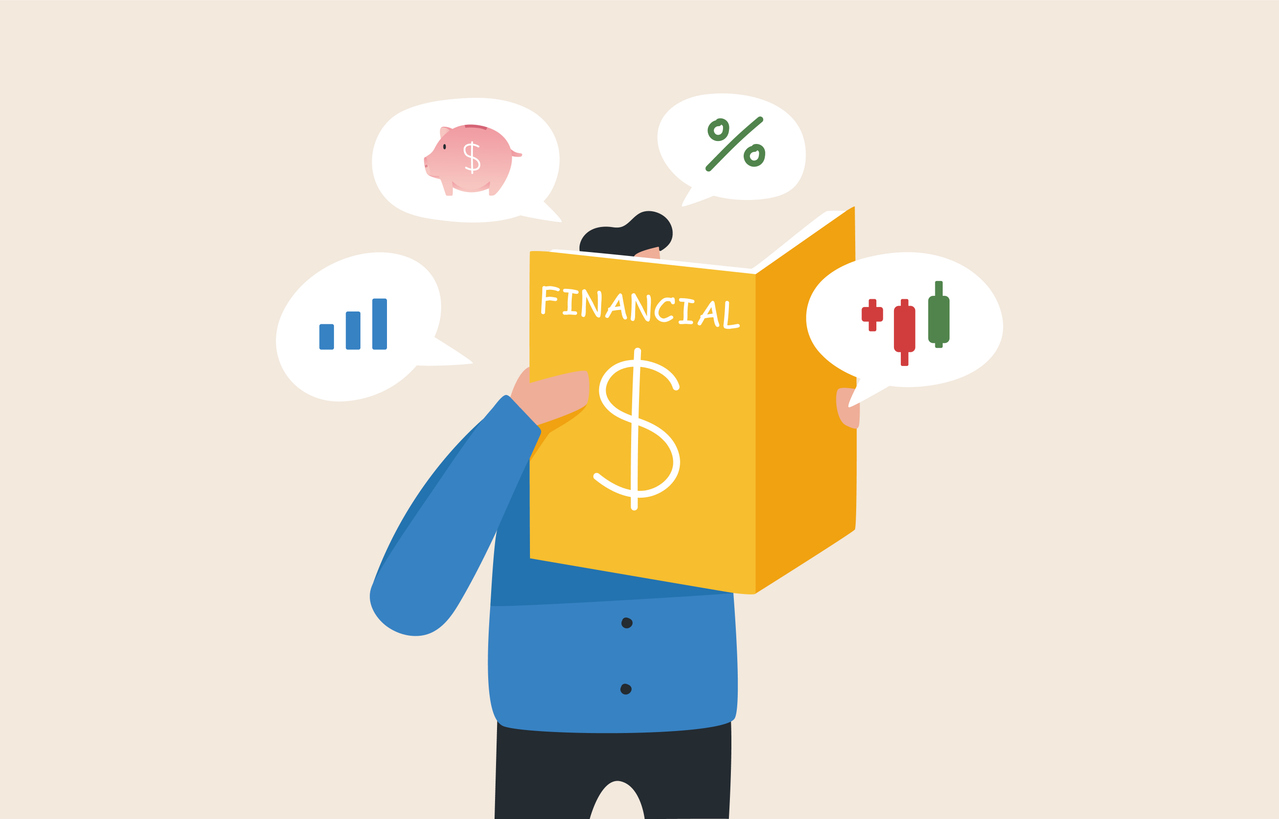
April is National Financial Literacy Month, which can easily be translated to classroom activities at every educational level!
This crucial skill can empower individuals to make informed decisions about money management throughout their lives. While it may seem like a complex topic reserved for adults, introducing financial concepts to students can lay a strong foundation for their financial well-being in the future. By instilling good financial habits early on, we can equip our children with the tools they need to navigate the complexities of personal finance confidently. In this blog post, we’ll explore effective strategies and lessons for teaching financial literacy to students at every level.
Importance of Financial Literacy Education
Financial literacy encompasses a range of skills, including budgeting, saving, investing, understanding credit, and avoiding debt. By teaching these concepts early, we can help children develop healthy attitudes towards money and instill responsible financial habits from a young age. Research suggests that early financial education can lead to better financial decision-making later in life, ultimately improving individuals’ financial well-being.
Elementary School
When teaching financial literacy to elementary students, it’s essential to use age-appropriate language and activities to keep them engaged and interested as they learn money basics. Here are some effective strategies for teaching financial literacy to young learners:
Start with the Basics
Begin by introducing fundamental financial concepts such as the value of money, different types of currency, and basic budgeting skills. Use real-life examples and interactive activities to make these concepts relatable and understandable for young children.
Make it Interactive
Engage students in hands-on activities and games to reinforce key financial concepts. Activities like setting up a classroom store where students can “buy” and “sell” items using play money can teach them about the basics of transactions, budgeting, and saving.
Use Visual Aids
Visual aids such as charts, graphs, and diagrams can help illustrate complex financial concepts in a way that is easy for elementary students to understand. Use visuals to demonstrate concepts like earning, saving, spending, and investing.
Explore Needs vs. Wants
Help students differentiate between needs and wants by discussing the difference between essential items like food, shelter, and clothing, and non-essential items like toys and entertainment. Encourage critical thinking by asking students to identify and prioritize their needs versus their wants.
Introduce Basic Money Management Skills
Teach students how to count money, make change, and create a simple budget. Use role-playing activities to simulate real-life financial scenarios, such as grocery shopping or paying bills, to help students develop practical money management skills.

Middle School
Middle school is a pivotal time for students to develop essential life skills, including financial literacy. During this stage, students start to earn allowances and save money for future purchases. By teaching financial literacy in middle school, teachers can empower students to make responsible decisions about money and lay a strong foundation for their financial well-being in the future. Here are some topics educators can teach:
Budgeting Basics
Introduce students to the concept of budgeting and help them understand the importance of managing their money wisely. Teach them how to create a budget, track expenses, and prioritize spending based on their needs and goals.
Saving and Investing
Teach students the value of saving money and the power of compound interest. Introduce them to different savings options, such as savings accounts and certificates of deposit, and discuss the benefits of long-term investing in stocks and bonds.
Understanding Credit
Help students understand the basics of credit, including how credit cards work, the importance of building good credit, and the consequences of overspending and accumulating debt. Emphasize responsible credit card use and the importance of paying bills on time.
Consumer Awareness
Teach students how to be savvy consumers by discussing topics such as advertising techniques, comparison shopping, and understanding product warranties and return policies. Encourage them to critically evaluate advertisements and make informed purchasing decisions.
Financial Goal Setting
Guide students in setting short-term and long-term financial goals and developing actionable plans to achieve them. Encourage them to think about their future aspirations, such as saving for college, buying a car, or starting a business, and discuss the steps they can take to reach their goals.

High School
High school is a critical stage in a student’s life, marking the transition from adolescence to young adulthood. During this time, students begin to take on more responsibilities and face important decisions that can impact their financial future. Teaching financial literacy to high school students is essential for equipping them with the knowledge and skills they need to make informed decisions about money management as they become prepare for college, career, and civic life. Here are some strategies and topics to teach financial literacy at the high school level:
Comprehensive Curriculum
Develop a comprehensive economics curriculum that covers key financial concepts, including budgeting, saving, investing, credit management, and financial planning. Provide students with a solid foundation of financial knowledge that they can apply to various aspects of their lives.
Real-World Experiences
Provide opportunities for students to apply their financial knowledge in real-world contexts, such as managing a classroom economy, participating in entrepreneurship projects, or volunteering at a local nonprofit organization. Discuss topics such as student loans, car loans, credit card debt, and retirement planning to help students understand the implications of their financial decisions. These experiences allow students to practice financial decision-making skills in a supportive environment.
Hands-On Activities
Incorporate hands-on activities and simulations to engage students in active learning and reinforce key financial concepts. Activities such as budgeting exercises, investment simulations, and credit score simulations allow students to apply their knowledge in practical scenarios and develop critical thinking skills.
Personal Finance Projects
Assign personal finance projects that require students to research, plan, and present on topics such as creating a budget, managing debt, investing in the stock market, or planning for retirement. Encourage students to collaborate with their peers and apply creative problem-solving skills to develop practical solutions to financial challenges.
Credit Education
Provide students with a comprehensive understanding of credit, including how credit scores are calculated, the importance of building good credit, and the potential risks of credit card debt. Teach students how to read credit reports, dispute errors, and use credit responsibly to achieve their financial goals.
Financial Planning Workshops
Offer financial planning workshops or seminars where students can learn about topics such as goal setting, budgeting, saving for college, and preparing for major life events like buying a car or purchasing a home. Empower students to take control of their financial futures by equipping them with the tools and resources they need to make informed decisions.
Teaching financial literacy to students is essential for preparing them to navigate the complexities of personal finance. By implementing strategies at every level, educators can empower students to make informed decisions about money management and set them on the path to financial success. By investing in financial education, teachers can equip students with the knowledge and skills they need to achieve their financial goals and build a secure future for themselves.
Want more lessons and activities for your social studies classroom?
Get a free trial of Active Classroom to explore more financial literacy resources.
Monet Hendricks is the blog editor and social media/meme connoisseur for Social Studies School Service. Passionate about the field of education, she earned her BA from the University of Southern California before deciding to go back to get her master’s degree in educational psychology. She currently attends the graduate program at Azusa Pacific University pursuing advanced degrees in school psychology and Applied Behavior Analysis. Her favorite activities include watching documentaries on mental health and cooking adventurous vegetarian recipes.